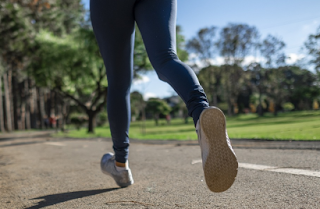Understanding the Concerns
- Impact on Joints: Running and jogging involve repetitive impact on the knees, hips, and ankles, which can potentially lead to wear and tear on the joints over time.
- Injury Risk: The high-impact nature of running increases the risk of injuries such as stress fractures, runner's knee (patellofemoral pain syndrome), shin splints, and tendonitis.
Research and Evidence
Contrary to popular belief, several studies have provided nuanced insights into the effects of running on joint health:
- Joint Adaptation: Regular running might actually improve joint health by strengthening the surrounding muscles and bones, potentially reducing the risk of osteoarthritis.
- Individual Factors: Factors like running technique, shoe quality, surface (hard pavement vs. soft trail), and individual biomechanics play a crucial role in determining the impact on joints.
- Moderation is Key: Excessive or improper running techniques without adequate rest and recovery can lead to increased risk of joint injuries.
Improper running techniques badly affect our knees
Improper running techniques can indeed contribute to increased stress on the knees, potentially leading to knee injuries or issues over time. Here are some common running techniques that, when executed incorrectly, may adversely affect the knees:
- Heel Striking: Landing heavily on the heel with an extended leg in front of the body causes a sudden jolt of force through the knee joint. This abrupt impact can increase stress on the knees and result in discomfort or injury.
- Overstriding: Taking excessively long strides may lead to overextension of the leg, causing the foot to land ahead of the body's center of mass. This can generate greater impact forces on the knees upon landing, potentially causing knee-related problems.
- Lack of Knee Flexion: Running with stiff or straight legs without proper knee flexion upon landing can result in increased shock absorption by the knees, leading to potential strain or discomfort.
- Excessive Bouncing: Vertical bouncing while running increases the up-and-down movement, resulting in increased impact forces transmitted to the knees with each stride.
- Inadequate Core Stability: Weak core muscles can cause excessive side-to-side movement (hip adduction or internal rotation), leading to misalignment and increased stress on the knees during running.
- Overpronation or Supination: Overpronation (excessive inward rolling of the foot) or supination (excessive outward rolling) can lead to poor foot and knee alignment, potentially causing knee issues due to the misalignment.
Correcting these improper techniques and adopting the following proper running form can help reduce the stress on the knees:
- Midfoot or Forefoot Landing: Landing with a midfoot or forefoot strike instead of striking with the heel can distribute impact forces more evenly and reduce stress on the knees.
- Shorter, Faster Strides: Taking shorter, quicker strides can reduce overstriding and limit the impact on the knees upon landing.
- Maintaining Proper Posture: Keeping an upright posture with a slight forward lean and engaging core muscles can help in maintaining proper alignment and reducing stress on the knees.
- Gradual Progression: Gradually increasing running intensity and distance allows the body to adapt and strengthen gradually, reducing the risk of overuse injuries, including knee-related issues.
Mitigating Risks and Promoting Joint Health
- Proper Technique: Using correct running form and technique can reduce stress on joints. Ensuring a midfoot or forefoot strike rather than heel striking can help distribute impact more evenly.
- Gradual Progression: Start with a manageable distance and gradually increase speed and distance to allow joints to adapt and strengthen gradually.
- Quality Footwear: Invest in well-fitted, cushioned running shoes that provide adequate support and shock absorption.
- Cross-Training: Incorporating low-impact exercises like swimming, cycling, or strength training can help balance the stress on joints.
- Rest and Recovery: Allow ample time for rest and recovery between runs to prevent overuse injuries and give the body time to repair and strengthen.
Running or jogging, when done with proper technique, adequate preparation, and moderation, doesn't necessarily harm joints. In fact, it can contribute positively to overall joint health. However, excessive or improper running practices can increase the risk of joint-related issues.
Consulting with a healthcare professional or a sports medicine expert can provide personalized guidance on starting or continuing a running routine while ensuring joint health. Ultimately, a balanced approach that includes proper training, appropriate footwear, and listening to your body's signals is crucial in reaping the benefits of running while safeguarding joint health in the long run.




Post a Comment
Post a Comment